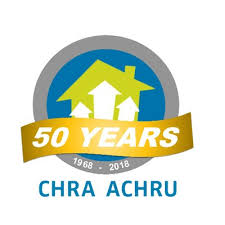An amalgamation of several housing firms presented a unique challenge for one of Canada’s largest social housing providers. Each faction brought its own technology, workflows and data. After nearly two decades of managing disparate systems, it was time for a change. Host Tarun George, manager of Strategic Partnerships and Development, Ontario Non-profit Housing Association (ONPHA) led the Rethinking Social Housing Technology webinar. He was joined by panelists Luisa Andrews, vice president, Information Technology Services, Toronto Community Housing Corporation (TCHC) and Nick Davis, vice president, Professional Services, Yardi. The group discussed the challenges of bringing outdated systems into the modern age of integration, automation and simplicity in social housing technology. United but disparate TCHC was founded in 2002 after the amalgamation of other housing organizations. To manage its 110,000 residents across more than 2,100 buildings, TCHC relied on a piecemeal arrangement of technologies. At that time, employees struggled to see an integrated picture of the new organization. Over the next 16 years, frustrations mounted over inefficiencies and inconsistencies. Andrews joined the organization in 2018. She noted, “at that time, the technologies didn’t meet our emerging needs, so TCHC worked with developers to create custom solutions. There were a few attempts at accounting upgrades but there was no application portfolio strategy.” Andrews’ mission was to bring change that would help the organization thrive. Transformation begins at TCHC TCHC intensified its search for integrated and scalable property management technology. TCHC identified Yardi Voyager Social Housing as the best fit for their accounting and operational needs across their entire organization. To simplify their energy management strategy, they selected YES Energy. Adapting RentCafe Social Housing’s tenant portal, which would meet residents’ expectations for virtual communication and rent collection, is in TCHC’s future vision “It wasn’t just a tech transformation....
Tech Investment
Strategies for Social Housing
Millions of Canadians count on the social housing sector to provide them with accessible housing resources and services. Organizations like the Canadian Housing and Renewal Association (CHRA) and Ontario Non-Profit Housing Association (ONPHA) work closely with local providers to advocate for and assist this underserved population, despite working within tight budgets. This sector’s resiliency has been the driver for great innovation over the last 12 months. In many cases this involved collaborating with technology providers to map out how the future of social housing can be simplified for staff, residents and suppliers. Deciding when and how to digitize social housing workflows depends on answers to question such as: is there an immediate factor that can be resolved to improve how your office functions? Are your applicants, residents and staff increasingly requesting new digital access to processes you’ve normally conducted in-person, on the phone or via mail? Can your team quickly access the data it needs to make informed decisions, while staying compliant? Once you make the decision to invest, benefits will follow. Benefit #1: Empower Staff through Streamlined Processes Technology built for social housing can reduce “touch points” that live within your day-to-day processes. Think of a touch point as a desk or computer screen that a file has to be delivered to in order for it to move one step closer to completion. The goal of reducing those touch points is not to lessen oversight, but rather to automate access to information so that those stops or “touch points” can be fewer and faster. The Durham Region Non-Profit Housing Corporation (Durham Housing), for example, recently self-evaluated their high-volume tasks to measure their efficiency. They wondered how they could reduce the number of times their team had to touch paperwork associated with those tasks,...
Simplify Resident Management
Ontario Social Housing Tenant Portals
The events of the past several months necessitated major shifts in the housing industry. The pandemic made it clear—if there had been any doubts—that the future of efficient, healthy social housing relies on integrated technology. When it comes to tenant files, bypassing physical touch points reduces exposure risk while increasing process efficacy. The latter benefit carries with social housing providers long after the pandemic has faded from conversation. Integrated leasing and property management technology expedites daily processes by digitizing, streamlining and automating tasks. One of the first steps towards greater efficiency begins with tenant portals. When resident portals integrate with back-end property management technology, the results are improved safety, maximized compliance and more accurate reporting. Ontario housing receive a mandatory tech makeover Leasing social housing units has always been an elaborate process: paper applications, manual reviews, in-person interviews, and seemingly endless data entry were a few trademarks of the process before online portals. Redundant and tedious tasks can cause staff burnout, costly errors and inconsistent tenant experiences. The pandemic forced social housing to evolve. Social housing management has been transformed by social distancing protocols and health guidelines. The transformation is changing office processes and the work environment. Months into the pandemic, an industry that has been accustomed to incremental change is adapting online leasing tools at a rapid pace. Technology, such as online tenant portals, comes with a host of benefits for social housing providers and tenants. 5 Benefits of a tenant portal for housing providers Tenant portals are tools of empowerment. Staff members benefit from online portals in five major ways: Save staff time with online and automated services. Online portals make data management easier for staff. Tenants enter their own data which is seamlessly integrated with back-end software. This reduces data entry for staff, minimizes errors and eliminates redundancy. Simplify resident management with user portals. Staff experience significantly fewer phone calls and in-person meetings when they can conduct rent geared to income (RGI) reviews and resident management tasks online. There is also less downtime between correspondences: no waiting on snail mail or returning calls. Improve financial management. Accurate reporting is crucial to long-term success. Online portals facilitate faster reporting. Housing providers can leverage software that supports provincial, municipal, board and internal reporting requirements. Staff can also create custom reports from any web-enabled device. Housing providers can also generate more complete rent collection and rent geared to income (RGI) reviews with user-submitted data. Increase data accuracy and accessibility. Physical documents are stored on premises and not accessible in remote work environments. Online portals facilitate telecommuting by storing resident information in a secure database that staff can access in the leasing office or their remote work locations. Enjoy a simple, single sign-in. Managing multiple software products requires multiple credentials for staff. Staff must manually rekey and update renter profile information in multiple locations if errors are made or changes are necessary. With an integrated solution complete with portals, tenants manage their own personal information. When staff must intervene, there is a single sign in and greater consistency throughout the leasing and RGI review process. Through the gained efficiencies of user portals, staff members are empowered to shift their focus from tedious tasks to building relationships and offering stellar services. Top 3 benefits of a tenant portal for tenants Tenant portals also empower residents. Users can safely and easily complete tasks with three added benefits: Offer convenience and flexibility. Tenants can gain 24/7 access via web browsers to their customizable profiles. A simple, self-service data entry process allows them to update personal information, complete forms and review their status. With a website, tenants can interact with staff without the restrictions of leasing office hours. They can also communicate with staff and receive responses via SMS/text messaging that abide by CASL requirements. Increase accuracy for annual or interim reviews. Residents can log in at their convenience and update RGI information. They...
Simplify Social Housing...
Voyager Social Housing + ONPHA
Social housing providers in Ontario strive to improve efficiencies and remain compliant while providing the best outcomes for residents and their communities. As non-profit organizations, achieving those goals on limited resources can be tough. But with innovative software, achieving success in social housing management is revolutionized. Yardi Voyager Social Housing leverages tried-and-true best practices to offer secure and powerful software with a single, integrated database. Intuitive workflows, convenient automation, and industry-specific tools make subsidized housing management simpler. Voyager Social Housing empowers providers to save time, save money, and thrive. Empower Staff for Success Staff efficiency is essential to success in social housing. Peter Altobelli, vice president and general manager of Yardi Canada explains, “Yardi understands the demands and changes within this industry. ONPHA serves more than 700 non-profit housing providers over 400,000 people in 163,000 homes within Ontario. It’s important work and they’re doing a great job, but turnover is high and resources are limited for providers.” To make the most of available resources, Voyager Social Housing facilitates optimal operation of Canada’s non-profit housing. In addition to robust accounting tools, Voyager Social Housing helps manage RGI (rent-geared-to-income) reviews, Rent Supplement programs and facilities management. The cloud-based software equips staff members with the fundamental tools needed to work confidently and efficiently in the office and offsite. With the integrated general ledger, staff avoids repetitive data entry and costly errors. Streamlined workflows make it easier to obtain consistency, reduce inaccuracies and coordinate efforts among team members. Staying compliant is also simplified with easy-to-follow workflows. With redundancy and discord minimized, staff is free to focus on more critical tasks. Simplifying Rent Voyager Social Housing offers features that simplify RGI reviews: Provincial requirements can be readily updated in Voyager, making it easier to calculate rents using the most...
Efficient Social Housing
Applications + Waitlists
Technology is transforming the way social housing providers manage properties. The technological advancements that have already transformed financials and operations are now automating resident-based transactions. The results are increased efficiencies for clients and greater empowerment for staff. Peter Altobelli, vice president of sales and general manager for Yardi Canada, explored four benefits of technology for applications and waitlists in the Ontario Non-Profit Housing Association Procurement Newsletter. Check out a sneak peek of the article below. Revolutionized Application Process Traditional social housing applicant intake processes rely heavily on in-person interviews. Those interviews run the risk of miscommunications and require a lot of time for your staff and prospective residents. “Online, self-service application workflows present each applicant with a consistent experience, conveniently available 24/7. Applicants can submit their information when it’s most convenient for them from any web browser with digital accuracy. This provides more efficient use of staff’s time when reviewing applications,” said Altobelli. Manage Waitlists in Real-Time Using conventional mail notifications, updating waitlists is a lengthy process. Convenient online user portals connect waitlisted households to leasing office staff in real-time. “Connected technology makes it possible for social housing providers to efficiently upload documents, respond to housing offers and notify staff of changes and pending approvals, in real time, and maintain updated waitlist,” explained Altobelli. Innovative technologies enable staff to meet the needs of applicants and residents while reducing administrative workloads for staff. Get the full story, including the benefits of electronic CRM, at...
50 Years of Advocacy
Social Housing Congress Convenes
The Canadian Housing and Renewal Association / l’Association Canadienne d’Habitation et de Renovatoin Urbaine (CHRA/ACHRU), held its 50th National Congress on Housing and Homelessness in Ottawa, Ontario from May 24 to 27, 2018. Yardi was proud to be a Congress Partner on this milestone year for the event. Peter Altobelli, Yardi vice president and general manager, spoke at the opening session and at the Yardi Awards Luncheon. Altobelli highlighted Yardi’s 20-year relationship with CHRA and focused on the importance of collaboration in the social housing industry. “At Yardi Canada, we have always been deeply connected with initiatives to help build our community and our industry. It is with the fruit of our growth that we further fuel the industry by supporting organizations such as CHRA / ACHRU that strive to bring a voice to affordable housing providers on a national level,” Altobelli said. Samyukta Jaishankar, team lead for Yardi’s Canadian marketing efforts, caught up with Jeff Morrison, executive director of CHRA, during the event. During their conversation, Jeff provided a behind the scenes look at how the 50th anniversary of the congress came together, what the internal goals were for the conference and how attendees would have the ability to shape the future with CHRA. “This year the challenge was that we had to do two competing things: reminisce and celebrate our evolution and success as an organization, as well as look forward to see what we can do with the future,” Morrison said. As part of the retrospective portion of the event, CHRA presented a video production which featured a historic look at the organization. Originating in 1968 as an offshoot of a National Association of Housing Redevelopment Officials chapter from upstate New York, CHRA/ACHRU has since grown to represent Canadian social housing providers...
Social Housing
Overcoming Tech Challenges
Peter Altobelli, vice president and general manager at Yardi Canada Ltd. and Sean Bremner, maintenance director at Baptist Housing, presented a session on Social Housing Technology to a packed room at Housing Central. The conference was held in Richmond, BC and hosted by the British Columbia Non-Profit Housing Association. During the presentation, Altobelli and Bremner explored how technology can improve organizational management and generate cost savings with high returns on investment. The presentation also gave attendees advice in preparation for change as they implement new technology. As vice president of a software provider that works with social housing organizations across Canada, Altobelli provided insight into the latest technology geared for non-profit housing managers. “The crucial value-adds that an organization will realize with the use of technology are automating tasks, improving the user experience with better tools to increase productivity, and simplifying staff management,” said Altobelli. Altobelli spoke about how automated processes are most effective when based in the cloud and optimized for multiple web browsers, including tablets and smartphones. Putting those solutions in the cloud makes it easier to create effective access for tenants and prospects, property and financial management and maintenance management. “When you are able to access accounting, budgeting, inspections, maintenance, energy and resident management data all on one system, it enables increased productivity for your entire team,” Altobelli said. Bremner presented a case study of how his organization, Baptist Housing, overcame internal challenges with technology. Focusing on maintenance workflows, Bremner described how former processes that required manual, handwritten notes often omitted relevant details, made it difficult to access active maintenance requests, created scheduling challenges and limited the capability of Baptist Housing to report on current and past maintenance requests. “We adopted a cloud-based software solution that drastically changed our maintenance program....







